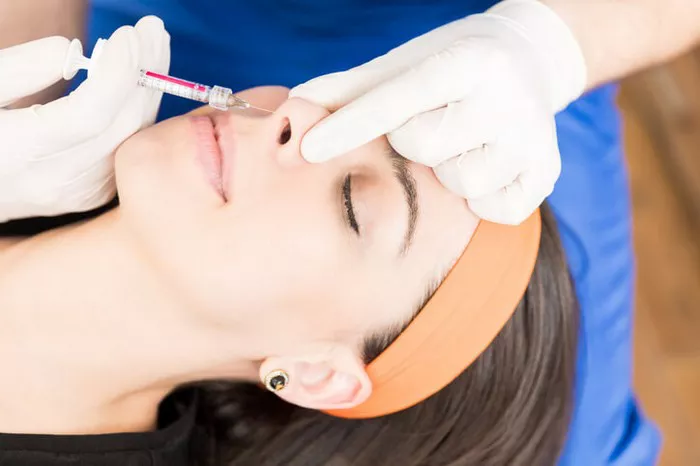Rhinoplasty, often referred to as a nose job, is a surgical procedure that aims to reshape and enhance the appearance of the nose. When performed by a skilled and experienced surgeon, rhinoplasty can provide transformative results and boost self-confidence. However, like any surgical procedure, there are instances where rhinoplasty may not meet the patient’s expectations, resulting in a failed outcome. When this happens, individuals often wonder about the chances of repair and whether it’s possible to achieve the desired results. In this comprehensive guide, we will explore the factors contributing to a failed rhinoplasty, the potential for repair or revision surgery, and what patients should consider when facing such a situation.
Understanding Failed Rhinoplasty
A failed rhinoplasty can encompass various scenarios, including:
Aesthetic Dissatisfaction: The final appearance of the nose may not align with the patient’s desired look, resulting in asymmetry, irregularities, or an unnatural appearance.
Functional Issues: Rhinoplasty is not only about aesthetics but also function. A failed rhinoplasty may lead to breathing difficulties or impaired nasal function.
Complications: Surgical complications, such as infection, excessive bleeding, implant problems, or issues with grafts, can result in a failed outcome.
Changes Over Time: As the body heals and changes over time, the results of a rhinoplasty may no longer match the patient’s aesthetic goals.
Patient Dissatisfaction: Some individuals may be dissatisfied with the results, even if there are no significant complications.
Factors Influencing Repair
The potential for repair or revision surgery after a failed rhinoplasty depends on several factors:
Nature of the Issue: The type and severity of the problem play a significant role. Some issues, such as minor asymmetry or irregularities, may be corrected with relatively straightforward revision surgery. Complex issues may require more extensive procedures.
Scar Tissue: The presence of scar tissue from the initial surgery can affect the success of revision surgery. Scar tissue can make the procedure more challenging and may limit the extent of correction.
Tissue Quality: The condition of the nasal tissue and skin can influence the ability to achieve successful repair. Good tissue quality typically supports better outcomes.
Surgeon Expertise: The skills and experience of the surgeon performing the revision surgery are crucial. A board-certified and experienced facial plastic or reconstructive surgeon is essential for achieving the best results.
Patient Expectations: Realistic patient expectations are essential. While revision surgery can improve the appearance and function of the nose, it may not always achieve the exact results envisioned initially.
Options for Repair
Repair options for failed rhinoplasty surgeries can vary depending on the specific issue:
Minor Corrections: Minor issues, such as minor asymmetry or small irregularities, may be addressed with nonsurgical options like dermal fillers to improve contour.
Revision Rhinoplasty: Revision rhinoplasty is a surgical procedure that aims to correct the issues resulting from a failed rhinoplasty. It may involve refining the nasal shape, addressing functional problems, or addressing complications.
Grafts and Implants: In some cases, grafts or implants may be used to support the nasal structure and improve the outcome.
Functional Corrections: If functional issues are present, such as breathing difficulties, revision surgery can address these concerns by improving nasal airflow.
Patient Considerations
Patients facing a failed rhinoplasty should consider several important factors:
Consultation: Schedule a consultation with a board-certified facial plastic or reconstructive surgeon experienced in revision rhinoplasty. Discuss your concerns, goals, and expectations openly.
Realistic Expectations: Understand that while repair or revision is possible, it may not always restore the nose to the exact appearance or function initially envisioned. Realistic expectations are essential.
Recovery: Be prepared for a recovery period following revision surgery, which may include some discomfort, swelling, and downtime.
Cost: Revision surgeries can be more complex and costly than the initial procedure. Discuss financial aspects and potential insurance coverage with your surgeon.
Emotional Support: The emotional aspect of undergoing revision surgery should not be underestimated. Seek emotional support from loved ones or consider counseling if needed.
Conclusion
A failed rhinoplasty can be disheartening, but the good news is that repair or revision is often possible. The chances of successful repair depend on the nature of the issue, the expertise of the surgeon, and the patient’s individual circumstances. Patients should approach the situation with realistic expectations, thorough consultations, and a clear understanding of the potential options and outcomes. With the guidance of an experienced facial plastic or reconstructive surgeon, individuals can work towards achieving their desired nasal appearance and function, regaining their confidence and overall satisfaction.


